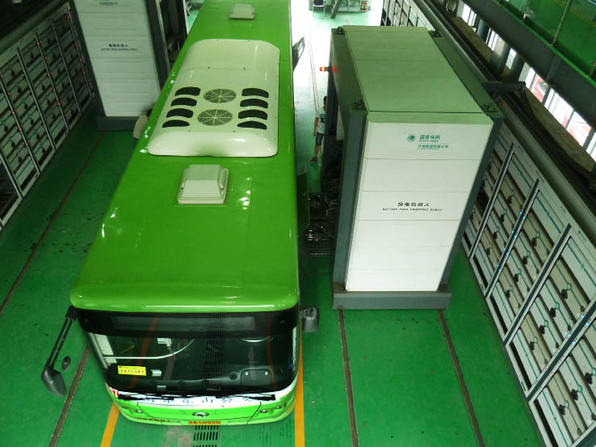New Energy Vehicles in China
New Market Environment
Today, electric, hybrid and oil-gas-fueled buses and taxis are not new to major Chinese cities owing to the country’s promotion drive. These cities plan to further popularize new energy vehicles. By 2015, planners hope to have 83,000 new energy buses in Chinese cities, accounting for 13.8 percent of the total.
According to the China Association of Automobile Manufacturers, China sold 6,853 new energy vehicles in the first quarter of 2014, up 120 percent year on year. Of these 4,095 were electric cars and 2,758 hybrids. Dong Yang, an executive vice chairman of the association, expects 2014 to be a milestone for the development of new energy vehicles. Although they occupy a small niche, manufacturers have high hopes for clean energy vehicles. According to Elon Musk, founder of Tesla Motors, by 2015 Tesla electric car sales in China will match those in the U.S. Tesla currently expects to sell around 7,000 cars in China in 2014, and roughly 25,000 by 2015.
Overseas Exports
Although far behind other car-producing countries, Chinese manufacturers are sparing no effort to develop new energy cars and expand the market. As China catches up with the big players in this field, many domestically-owned brands have earned respect on the international market.
Tourists to the London Olympics cruised pleasantly along the Thames in environmentally friendly double-decker buses. Although they may not have known it, the buses were exported from Ankai, a major Chinese bus manufacturer. On March 29 another Chinese company, BYD, exported its electric buses to Rio de Janeiro, which will host the 2016 Olympics. As the world’s largest producer of electric buses, BYD exports to Belgium, the Netherlands, and many countries in Asia and the Americas. Beijing’s Foton Motors has supplied Germany’s first electric buses, and Asiastar has exported clean energy coaches to Israel.
Improving Infrastructure
New energy cars mainly refer to those powered by fuel cells, hybrids, and electricity. Hybrid vehicles are regarded as a transitional product, with the thrust of future research directed towards electric and fuel cell powered cars.
Currently, further expansion of electric-powered car market is hampered by the difficulty of charging these cars. Chinese charging stations are still few and far between. However, China has achieved many breakthroughs with electric batteries. BYD’s electric buses can run 250 kilometers on urban roads on a full charge, consuming only 1.2 kilowatt-hours per kilometer. Asiastar’s quick-charge battery takes the opposite strategy. While passengers get on or off the bus, the battery takes a ten-second charge – enough to drive two or three stops.
Because of the infrastructural requirements, each city must take responsibility for installing charging posts. Beijing plans to complete the construction of 1,000 public fast-charging posts in 2014, and Shanghai planned to invest RMB one billion by 2015 to build 5,000 electric car poles in parking lots. By 2015 Shenzhen plans to have 168 charging stations for buses, 50 for taxis, 526 fast-charging posts and 39,000 regular charging posts for the public.
Along with the rise of supporting measures and cost reductions, it is estimated that by 2020 clean energy vehicles will account for over 10 percent of China’s car sales. The proportion of new energy vehicles is expected to rise significantly in China.
|
 |
|
A green bus at the first bus charging station in Nanjing, Jiangsu Province. |
